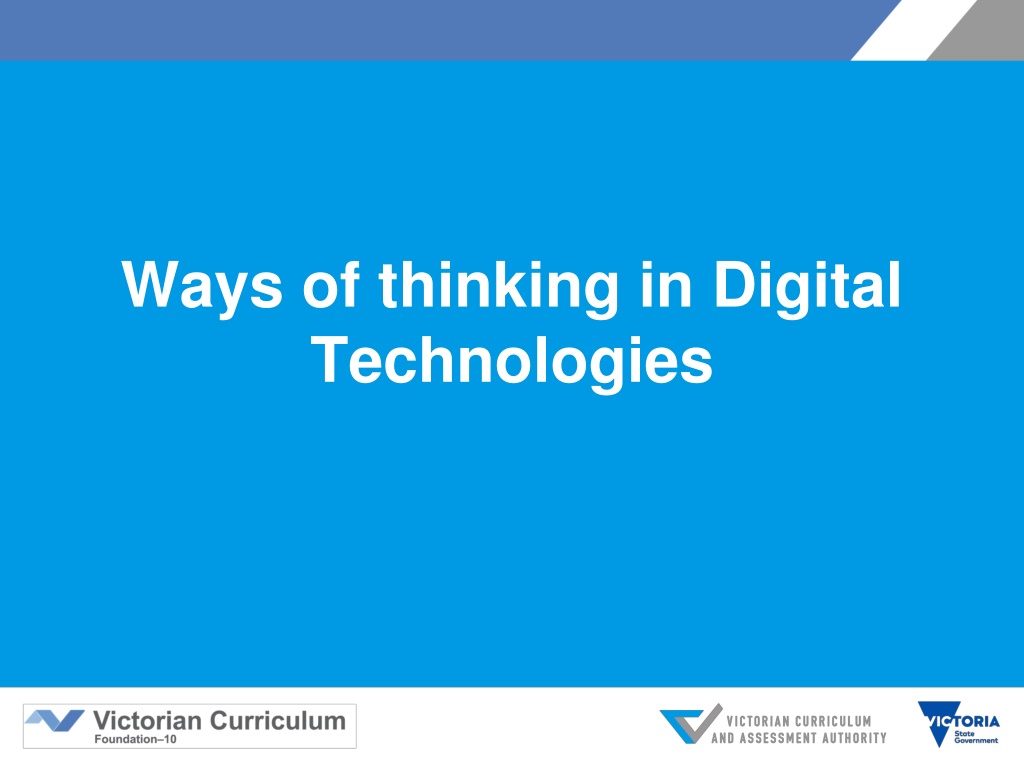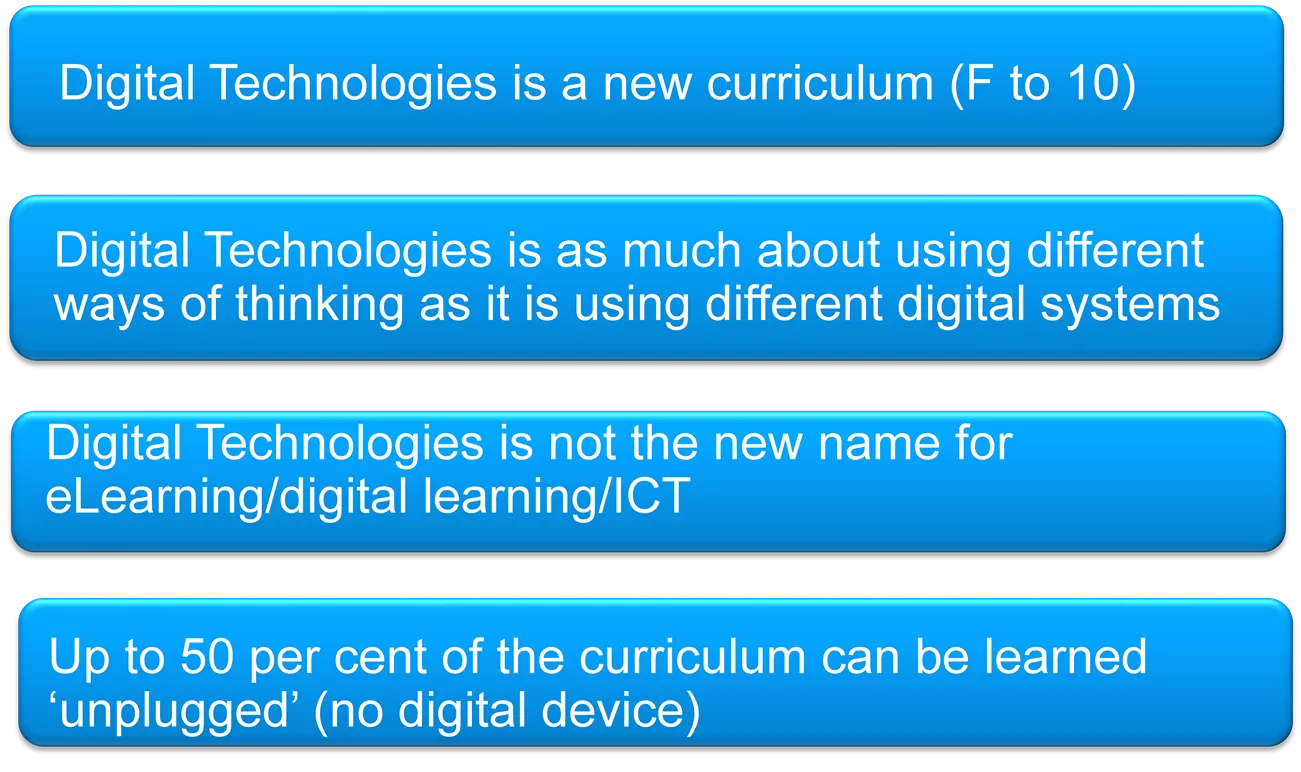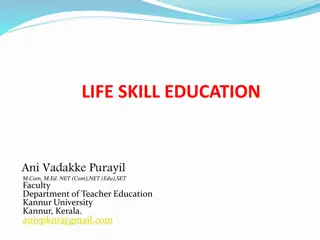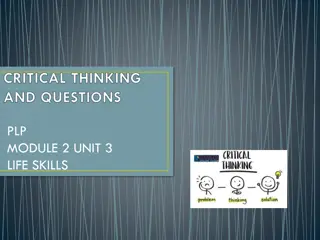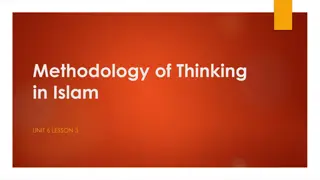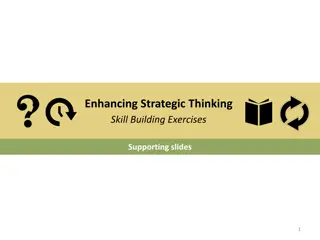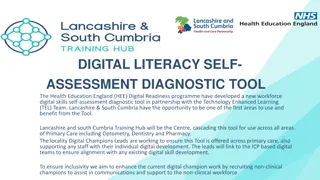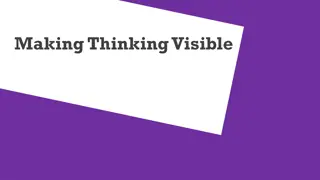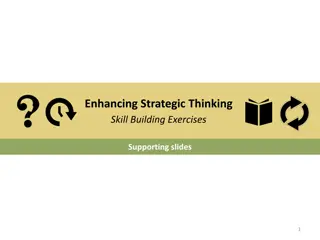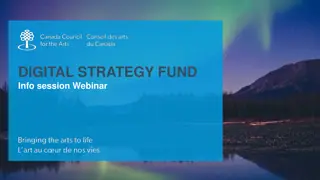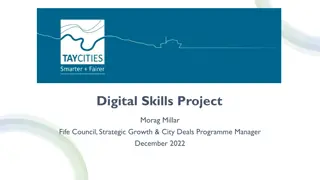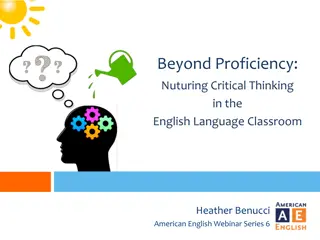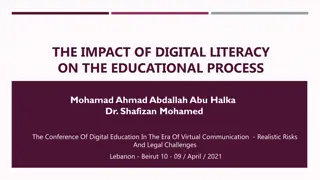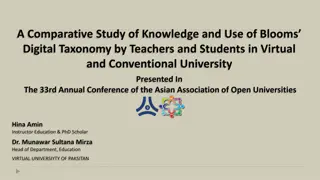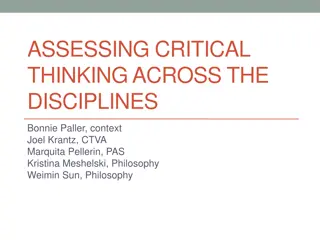Enhancing Digital Skills Through Diverse Thinking Approaches
Embrace the new curriculum of Digital Technologies by exploring various ways of thinking beyond traditional digital systems. Discover the essence of Computational, Design, and Systems thinking in creating innovative digital solutions. Uncover key content areas like Data and Information, Creating Digital Solutions, and Digital Systems to equip students with the skills needed for the digital age.
Download Presentation

Please find below an Image/Link to download the presentation.
The content on the website is provided AS IS for your information and personal use only. It may not be sold, licensed, or shared on other websites without obtaining consent from the author.If you encounter any issues during the download, it is possible that the publisher has removed the file from their server.
You are allowed to download the files provided on this website for personal or commercial use, subject to the condition that they are used lawfully. All files are the property of their respective owners.
The content on the website is provided AS IS for your information and personal use only. It may not be sold, licensed, or shared on other websites without obtaining consent from the author.
E N D
Presentation Transcript
Ways of thinking in Digital Technologies
Key messages about Digital Technologies Digital Technologies is a new curriculum (F to 10) Digital Technologies is as much about using different ways of thinking as it is using different digital systems Digital Technologies is not the new name for eLearning/digital learning/ICT Up to 50 per cent of the curriculum can be learned unplugged (no digital device)
Creating digital solutions Ways of thinking using programming include computational, design languages and productivity and systems thinking tools such as Microsoft suite Digital Technologies involves students creating digital solutions through the use of information systems and specific ways of thinking about problem solving Information systems comprise people, data, processes and digital systems
Digital Technologies Strands Data and Information Creating Digital Solutions Digital Systems analysing representing data designing hardware developing projects networks These are key content areas, not substrands evaluating
Students apply different ways of thinking when determining and using appropriate data, processes and digital systems to create innovative digital solutions. Data and Information Computational thinking Design thinking Systems thinking Creating Digital Solutions Digital Systems
Ways of thinking about problem solving Computational thinking, for example modelling aspects of solutions sequencing steps and decisions (algorithms) deconstructing problems into their component parts Design thinking, for example generating ideas for further development evaluating ideas, based on criteria conceiving opportunities for new solutions Systems thinking, for example seeing connections between solutions, systems and society identifying components of systems identifying intended and unintended outputs of a system
Computational thinking A problem-solving methodology that involves various strategies in order to solve problems that can be implemented by digital systems. techniques and It involves organising data logically, breaking down components, and the design and use of algorithms, patterns and models. problems into Victorian Curriculum Glossary
Computational thinking a hybrid! constructive logic abstract Modelling (representations)
Computational thinking a hybrid! Decomposing problems Generalising and applying rules Identifying patterns Precisely stating decisions
CT abstraction (making models) You are purchasing an evaporative airconditioning unit from Cool Connections Pty Ltd for your brick veneer home. The system will have a ceiling vent in each room you nominate. Currently you have ducted heating and three portable fans. Cool Connections needs to have a plan of your house to determine the positioning of the vents in each room. Draw a plan of your house to fit this purpose.
CT abstraction (making models) You are purchasing an evaporative airconditioning unit from Cool Connections Pty Ltd for your brick veneer home. The system will have a ceiling vent in the rooms you nominate. Currently you have ducted heating and three portable fans. Cool Connections needs to have a plan of your house to determine the positioning of the vents in each room. What details are relevant to this problem? Draw a plan of your house to fit this purpose. What did you include? What did you exclude and why? What was the most important information to include? How could your model be used in different circumstances what would you change? How could this scenario be adapted?
Progression of content Knowledge and skills are represented as a continuum. Here is an overview of the progression of a content description in the Creating digital solutions strand F-2 Follow, describe and represent a sequence of steps and decisions 3-4 5-6 7-8 Design algorithms represented diagrammatically and in English 9-10 Design algorithms represented diagrammatically and in structured English Design, modify and follow simple algorithms represented diagrammatically Define simple problems, and describe and follow
Design, modify and follow simple algorithms represented diagrammatically (levels 5 and 6) Start/stop Task or action Condition Link
Flowcharts for two-digit subtraction Start subtraction Start/stop Look at the ones NO Is the top digit smaller? Task or action YES Trade a ten for 10 ones Add 10 to the top one Condition Subtract the ones Subtract the tens Link Done! Source: DLTV Journal 3.1, 2015, p 16
Flowcharts for present participles for verbs play Start/stop Start/stop Get a verb Task or action Condition Add the suffix ing Write new word Link Source: based on DLTV Journal 3.1, 2015, p 17
Flowcharts for present participles for verbs make Start Start/stop Start/stop Get a verb Get a verb NO It ends in e Task or action YES Remove the e Condition Add the suffix ing Add the suffix ing Write new word Link Write new word
Sequence of algorithms (designing) from levels 3 to10 STRUCTURED ENGLISH Levels 3 and 4 Describe and follow a sequence of steps and decisions IF hour <12 print ( Good morning ) Levels 5 and 6 Design simple algorithms represented diagrammatically and in English Levels 7 and 8 Design algorithms represented diagrammatically and in English and trace algorithms . Levels 9 and 10 Design algorithms represented diagrammatically and in structured English Australian Curriculum Glossary
Design thinking Purposeful use of strategies for understanding design problems and opportunities, visualising and generating creative and innovative ideas, and analysing and evaluating those ideas that best meet the criteria for success and planning. Designing stems from the notion that current products, processes, systems or services are either unsuitable for our needs or can be improved.
Characteristics of design thinking Find simplicity in complexity Aesthetics and functionality Quality of user experience Elegant solutions Meet needs of people
Design thinking is a process that is purposeful Imagine Create Innovate
Idea 3 Idea 2 Divergence Idea 1 Convergence Preferred idea
Progressions in ideation Analogies (converging / rearranging) Provocation (force moves / unpredictable) Play-it-safe (modification)
Categories of idea generation techniques Technique Research Represent Refine Inspire Role playing Brainstorm Forced analogy Incubate Prototyping Further ideas can be found at Idea Generation Techniques among Creative Professionals, Herring, Jones and Bailey
Game that calculates Robot that talks Associate noun Rearrange PROBLEM verb Associate
Non-creative behaviour is learned Land & Jarman research findings 98% highly creative 30% highly creative 12% highly creative http://www.creativityatwork.com/201 2/03/23/can-creativity-be-taught/
Project Zero, Harvard University I see (list, itemise, deconstruct) I think What s the purpose? How does it work? What are the parts? Who would use/like it? I wonder What if ? What would happen if ..? What would change if?
Tips for teachers Collect/record experiences Make student thinking visible Break habitual teaching habits Find analogies for solving problems Articulate hidden assumptions
Build on others ideas without making critical judgments Avoid impulsivity (iteration and play) Encourage detours Allow hands-on experimentation Use a range of teaching /learning styles
Systems thinking A holistic approach to the identification and solving of problems where parts and components of a system, their interactions and interrelationships are analysed individually to see how they influence the functioning of the whole system. This approach enables students to understand systems and work with complexity, uncertainty and risk. Victorian Curriculum Glossary It also involves understanding the interdependence between information systems and how a change or output from one system can affect another, and how this affects larger systems such as the economy and society. VCE Computing study design
Reality is made up of circles, but we see straight lines. Herein lies the beginnings of our limitations as systems thinkers Peter Senge, The Fifth Discipline: The Art & Practice of the Learning Organization
Intended Processes Inputs Outputs Unintended Cause and effect? Loops (interdependencies between elements)
Systems thinking activity What resources are needed to make a tablet? What processes are used to convert the materials into a tablet? What are the social, economic and environmental implications of the tablet?
Whats the difference in the interface? Why?
Systems thinkers: Make mental models Think about interconnections Look for patterns of behaviour Consider events
Coding human knowledge in a way that can be carried out by a digital device
For further information please contact: Paula Christophersen Curriculum Manager, Digital Technologies 9032 1724 0407 043 110 christophersen.paula.p@edumail.vic.gov.au
